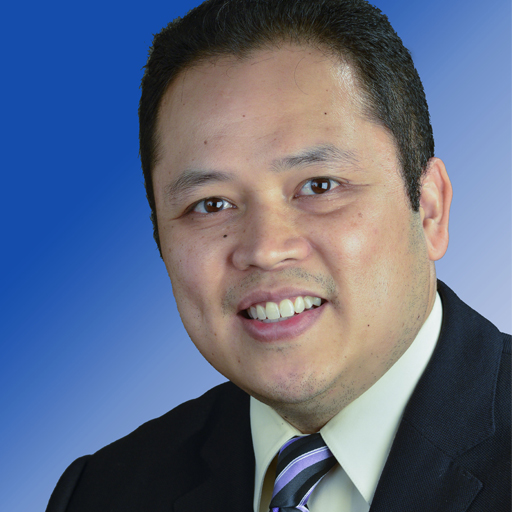Programme management vs. Project management
|
Tune in and get Inspired 🎧
Getting your Trinity Audio player ready...
|
Program management (PgM) and project management are similar in many ways. Both involve planning, executing, and monitoring interrelated tasks to achieve a specific goal. Perhaps the most significant difference is that PgM is focused on aligning an organization’s resources with its strategy, while the project management profession is focused on achieving specific objectives. As a result, program managers typically have a broader perspective than project managers (PM). For these reasons, PgM is often seen as a more strategic discipline than project management. Let’s take a deeper dive into their definitions and characteristics.
Estimated reading time: 9 minutes
Table of contents
- What is program management (PgM)?
- What is project management?
- What does a program manager (PgM) do?
- What does a project manager do?
- Is the delivery management office different between program management (PgM) and project management (PM)?
- Is program management higher than project management?
- What is a program management framework (PMF)?
- Program management (PgM) vs Project Management Office (PMO) — Both are technically centralized management offices providing support for multiple related projects.
- Program management vs Agile
- But wait, there’s more—What is Portfolio management?

What is program management (PgM)?
Program management (PgM) aligns strategic objectives with business strategy to achieve the desired return on investment. In particular, it is the practice of matching an organization’s resources with its strategic objectives. This type of management typically relies on a team of specialists who work together to plan, implement, and track progress towards business objectives.
PgM is typically led by a senior executive or a team of executives. However, a board or committee may also oversee the decision makers.
Notable characteristics:
- Must be strategic thinkers
- Excellent communicators
- Wear many hats
- Juggle multiple projects at once
Effective communication and coordination between all stakeholders are essential to successful PgM. Without this, achieving the strategic objective(s) can be challenging.
What is project management?
Project management is the process of planning, project execution, tracking, and monitoring a temporary endeavor to achieve a specific goal. Project managers ensure that the project is completed on time, within budget, and satisfies stakeholder expectations. To do this, they must understand the project’s objectives, manage risks and issues, and meet the project team’s and stakeholders’ expectations. To plan and execute each phase effectively, the project manager must also be familiar with the project life cycle, financial management, and resource capacity allocation. By understanding these aspects, the project manager can effectively oversee the project and ensure its successful completion and business goals.
Notable characteristics:
- Stakeholder management
- Negotiation skills
- Collaboration
- Influencing others
What does a program manager (PgM) do?
A Pgm is responsible for the overall program, pipeline management and governance of all the projects under their purview. In other words, they are responsible for aligning to the big picture. They may also allocate resources and work with stakeholders to ensure that the program meets their needs. n addition, program managers are responsible for ensuring that all the projects in the program are coordinated, and that resource allocation is conducted. They also provide guidance and ensure that the project teams make decisions that align with strategic initiatives. Ultimately, a Pgm guarantees that the entire program is successful.

What does a project manager do?
The project manager is responsible for successfully planning, executing and monitoring a project. They work with a team of stakeholders to ensure the project is completed on time, within budget, and to the required standard. To succeed, project managers must have strong problem-solving skills and adapt to changes in the project scope. They must effectively communicate with all team members, external partners, and clients. A project manager’s job is both challenging and rewarding, and those who are successful in this role can significantly contribute to their organization’s success.
Is the delivery management office different between program management (PgM) and project management (PM)?
PgM is a process of using knowledge, skills and tools to achieve specific objectives within an allotted time frame. In contrast, PM is the application of knowledge, skills, tools, and techniques to a unique set of deliverables that have a defined start and finish. The main difference between PgM and PM is that PgM is focused on organizational strategy and delivery of strategic goals. In contrast, a PM is focused on delivering a group of outputs.
Another critical difference between the two is capacity planning. It’s an ongoing process in PgM that ensures the right mix of resources is available when needed. In contrast, Projects are typically planned and executed with relatively little flexibility.
Organizational change management (OCM) is another critical area for a PgM. OCM encompasses the processes and tools used to manage the people side of change within an organization that a change project manager typically leads. In contrast, PMs typically focus on the technical aspects of change.
While there are some similarities between program and project management, there are also several key differences. Understanding these differences is essential for success in both roles.

Is program management higher than project management?
It depends on the organization and the leadership team.
Regardless, program management (PgM) is typically higher than project management (PM). One reason is that a PgM usually is accountable for delivering strategic objectives and overall financial resources, while a PM is responsible for project-level financials. In addition, a PgM usually has more project management experience and experience overseeing one or more programs rolled up into a portfolio.
As a result, program managers are typically better equipped to handle the challenges that can arise during a project. While both roles are essential, PgM is typically higher than project management. This does not mean that PgM is always superior to PM; in some cases, the reverse may be true. It is up to the organization to decide which type of management best suits its needs.
What is a program management framework (PMF)?
A PMF is a set of guidelines and best practices. It provides a roadmap for a PgM to follow and helps ensure that all essential tasks are completed promptly and efficiently.
A typical PMF includes a project management office (PMO), which oversees the PM processes to ensure alignment with the project lifecycle.
In addition, the PMO will also typically have several tools and templates that are used to support the PM processes. These tools and templates help standardize how the program is managed, making it easier for new team members to get onboarded quickly.
The PMO also provides support and resources to program and project managers, helping them to stay on track and deliver successful results. Organizations have a better chance of success following a well-defined PMF.
Program management (PgM) vs Project Management Office (PMO) — Both are technically centralized management offices providing support for multiple related projects.

There are two approaches that organizations can take: PgM and PMO. The correct method will depend on your needs.
PgM is focused on resource management and is best suited for organizations with multiple ongoing projects. A program manager is responsible for managing the allocation of resources across all projects, and they also play a crucial role in identifying potential risks and issues. In addition, a program manager typically has a broad range of technical skills, which makes them well-suited for organizations with complex technical requirements.
On the other hand, the PMO is focused on project proposals and approvals. PMO staff work with project teams to develop detailed proposals and coordinate with other departments to ensure that projects have the necessary approvals before moving forward. Projects often require a significant amount of resources, and it is essential to ensure that you have enough available before beginning any new project.
Ultimately, PgM and PMO can be valuable tools for managing projects. The approach for a given organization will depend on its specific needs and goals.
Program management vs Agile
There are several approaches to managing projects—program management (PGM) and agile. Both methods have their strengths and weaknesses, and the best strategy for any project depends on various factors.
PGM is focused on operational constraints and managing risks. It relies heavily on planning and documentation, and projects typically run more linearly. This can make PgM ideal for large, complex projects with many moving parts. However, it can also lead to bureaucracy and delays if not appropriately managed.
Agile, on the other hand, is focused on delivering project work in short iterations or cycles. This allows stakeholders to provide regular feedback and the project team to make course corrections as needed. It’s generally less formal than PgM, making it more flexible and adaptable. However, this can also lead to a lack of governance and control if not managed correctly.
In general, PgM is better suited for larger, more complex projects, while agile is better for smaller projects that require more flexibility. However, no hard rule says this has to be the case. And the best approach for any project will ultimately depend on the specific circumstances.

But wait, there’s more—What is Portfolio management?
Portfolio management is the process of strategic planning, selecting and prioritizing projects and programs to achieve organizational objectives. A portfolio is a collection of programs or projects grouped to accomplish a common goal. Portfolio management is responsible for ensuring that the portfolio as a whole is aligned with the organization’s strategy.
Portfolio managers must ensure that the portfolio is balanced and that resources are used effectively. They also need to ensure that each project or program contributes to the overall goal of the portfolio.
Portfolio management sits above program management and ensures that the portfolio is successful.
If you’re interested in learning more about how our program or project management services can improve your operations and accelerate growth, mediaTCgroup can help. We specialize in using this approach to reach business goals across industries. Contact us today to learn more about our services!
Don’t miss out on opportunities to improve your business efficiency – contact mediaTCgroup today and see what we can do for you!
If you are new to our website, we would like to welcome you. Consider subscribing to our newsletter to access exclusive content and discounts on our online shop.
